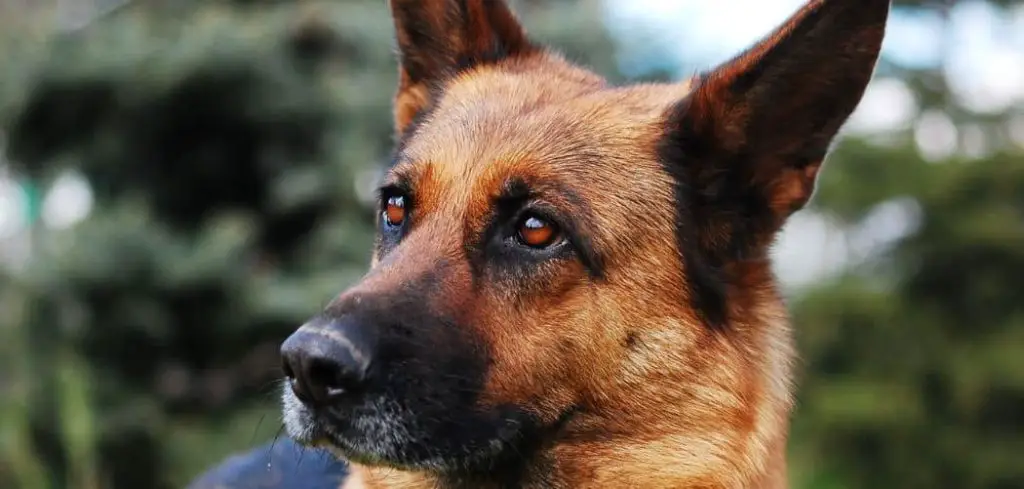Is your dog acting confused—wandering aimlessly, staring into space, or seeming disoriented—and refusing to eat? These changes can be deeply concerning, especially when they happen suddenly or worsen over time.
We outline the most common causes behind confusion and appetite loss in dogs, how to support them at home, and when it’s time to get veterinary help.
Dog Confused and Not Eating — Why It Happens
When a dog is confused and not eating, it can be due to cognitive dysfunction syndrome (dog dementia), seizures, toxin exposure, brain injury, low blood sugar, liver disease, or a neurological disorder.
These conditions often affect the brain’s function, making your dog appear disoriented, and in many cases, suppress appetite.

Dog Confused and Not Eating: Common Causes
1. Cognitive Dysfunction Syndrome (Dog Dementia)
Cognitive dysfunction syndrome (CDS) is one of the most common causes of confusion in senior dogs. As dogs age, brain changes can lead to memory loss, disorientation, and appetite changes.
Signs include:
Wandering aimlessly
Getting stuck in corners or behind furniture
Seeming “lost” in familiar spaces
Forgetting feeding times or disinterest in food
Dogs with dementia often benefit from a routine, calming environments, and vet-prescribed supplements or medications like selegiline or S-Adenosylmethionine (SAMe).
2. Neurological Disorders
Conditions affecting the brain or nervous system—such as brain tumors, encephalitis, or trauma—can cause sudden confusion and refusal to eat.
These are often accompanied by additional neurological symptoms.
Watch for:
Head tilting
Circling or unsteady walking
Sudden behavior changes
Inability to find or eat food normally
These cases are urgent. If your dog seems neurologically impaired, a vet evaluation and imaging (like MRI or CT scan) may be required.
Related: Dog vomiting and not eating (Causes and when to worry)
3. Seizures or Postictal Phase
If your dog has experienced a seizure, the period immediately after (known as the postictal phase) can involve confusion, disorientation, and appetite loss. Your dog may pace, seem dazed, or avoid food.
Symptoms of post-seizure confusion:
Stumbling or falling
Reluctance to eat
Restlessness or anxiety
Staring blankly or not responding to your voice
If your dog experiences repeated seizures or doesn’t return to normal, consult your vet immediately. Anticonvulsant therapy may be necessary.
4. Low Blood Sugar (Hypoglycemia)
Low blood sugar can affect brain function, leading to confusion and lethargy. It’s especially common in puppies, small breeds, diabetic dogs, or those that haven’t eaten for an extended time.
Signs include:
Wobbling or uncoordinated movements
Trembling
Weakness or collapse
Disinterest in food despite hunger
Feeding small, frequent meals or rubbing honey on your dog’s gums in a mild case may help—but recurring symptoms should be addressed by your vet.
5. Toxin Exposure
Dogs who ingest household toxins, human medications, plants, or spoiled food may develop neurological symptoms, including confusion and refusal to eat.
Toxin-related symptoms:
Drooling or vomiting
Tremors or seizures
Disorientation
Excessive panting or restlessness
Call your vet or an emergency poison hotline immediately if you suspect your dog has eaten something toxic.
6. Liver Disease and Hepatic Encephalopathy
The liver helps filter toxins from the blood. When it’s not functioning properly—due to liver disease or congenital issues—toxins can accumulate in the bloodstream and affect brain function, leading to confusion and loss of appetite.
Other signs include:
Head pressing against walls
Drooling or tremors
Jaundiced gums or eyes
Vomiting and lethargy
Liver disease is treatable, especially with early diagnosis. Your vet may recommend a special diet and medications to reduce ammonia buildup.
What to Do If Your Dog Is Confused and Not Eating
If your dog’s symptoms are mild and you suspect aging or temporary disorientation, you can try the following at-home care:
Stick to a consistent daily routine (feeding, walking, sleeping)
Feed in a quiet, low-stimulation area
Hand-feed or warm food slightly to enhance smell and interest
Provide clear paths and reduce clutter for easier navigation
Use familiar cues like name, feeding words, or soft encouragement
For senior dogs, consider cognitive support supplements like omega-3s or antioxidants (with your vet’s approval).
When to Call or Visit Your Vet
You should contact your vet urgently if:
Your dog hasn’t eaten in 24 hours
Confusion appears suddenly or worsens
There are signs of seizures, vomiting, or collapse
You suspect toxin ingestion
Your dog is elderly and showing signs of mental decline
A thorough physical exam, bloodwork, and neurological assessment will help identify the cause and guide treatment.
Key Takeaway
If your dog is confused and not eating, don’t ignore the signs. Whether the cause is aging, a temporary episode, or something more serious like liver disease or a neurological condition, early action can make all the difference.
Observe your dog carefully, maintain a calm and supportive environment, and get in touch with your vet for guidance.
With the right care, many dogs can recover clarity, comfort, and a healthy appetite.
